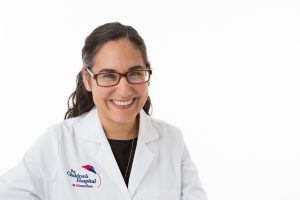On Dec. 12, 2019, the Senate Committee on Health, Education, Labor & Pensions passed Title VII of the Public Health Service Act (S.2997), clearing a major hurdle for legislation that could help the pediatric rheumatology community as it struggles to maintain a workforce to serve its patient population.
In the first few months of 2020, the Senate will vote on reauthorization of the legislation, which includes the Investment in Tomorrow’s Pediatric Health Care Workforce Act (S.2443). This act stipulates a loan repayment program under which pediatric subspecialists with educational loans who are working in areas in with a provider shortage would be eligible for $35,000 per year in loan repayment.
Tiny though the community of roughly 300 active American pediatric rheumatologists may be, there is little doubt senators voting on this bill in committee had us in mind. Sen. Lamar Alexander (R-Tenn.), who chairs the committee, referred to this legislation in the official press release as work “to incentivize doctors to fill shortages in pediatric specialties, such as pediatric cardiologists or rheumatologists.”
This small nod is thanks to more than a decade of advocacy by the ACR for legislation to help the pediatric workforce. In 2019 alone, ACR volunteers and staff made approximately 230 visits to congressional offices and sent 2,000 emails to Congress.
My Story

Tamar Rubinstein, MD, MS
I first wrote to Congress 10 years ago, the summer I graduated from medical school. That letter was to Sen. Barbara Mikulski (D-Md.), asking her to co-sponsor the Arthritis Prevention, Control & Cure Act of 2009. That bill proposed to amend the Public Health Service Act to implement a National Arthritis Action Plan, which included, among other things, a loan repayment program for pediatric rheumatologists.
In the letter to Sen. Mikulski, I wrote: “As a new pediatric resident interested in entering pediatric rheumatology and a newly graduated medical student with close to $200,000 in loans to repay, I can’t tell you how many people have tried to dissuade me from this track purely from a financial standpoint.”
The list included my soon-to-be brother-in-law, who asked me over dinner one night whether I found dermatology interesting. At the time I graduated from medical school, my husband was a year out of nursing school, laden with his own educational debt.
Sen. Mikulski did co-sponsor the bill. Later that year, I and other members of the ACR’s Pediatric Rheumatology Resident Program discussed it with cautious optimism. I was sitting at a table with a fellow I had met in my medical school pediatric rheumatology elective (and who would later become my chief). “Hopefully, it will be in effect by the time you enter fellowship,” she said. But like many bills, this one died in committee.
The lack of a loan repayment program did not dissuade me from entering pediatric rheumatology. Neither did the relatively low salaries in comparison to other specialties and subspecialties. On one side of my family, I was one generation removed from poverty, and I appreciated that any medical salary would keep me comfortable. Further, the relative financial disincentive to go into pediatric rheumatology felt like a badge of honor at times.
“You are not going into pediatrics to make money,” people often warned us as medical students.
A pediatric hematologist once confided to me that he preferred it this way, because it meant the people who went into the field had to really, really love it.
Supply & Demand
There is some appeal to a field of self-selected, highly dedicated practitioners, who have already passed a test of devotion by signing up for a career that ensures a loss of close to $1 million in total lifetime earnings compared with general pediatrics.1
But serious risks exist with this model: There’s the obvious risk of dissuading highly capable candidates and limiting the number of trainees. For the 2019 match in pediatric rheumatology, there were 14 U.S. graduate applicants and 22 total applicants for 39 positions. Only 19 positions were filled.2 The 2018 match was similar, with only 22 of 41 positions filled.3 In the current climate, a program filling its available fellowship positions in pediatric rheumatology is no less than a small miracle.
This is extremely worrying considering the staggering gap between supply and demand of pediatric rheumatologists that is projected over the next 10 years. The 2015 ACR Workforce Study Report indicated that, given current trends, a significant decrease will occur in the supply of pediatric rheumatologists despite an increase in demand.4 By 2030, the projected need for pediatric rheumatologists will be twice the supply.
Although the gap between supply and demand is magnified in pediatric rheumatology, one of the lowest paying fields in medicine, it is not unique. Many other pediatric subspecialties struggle to attract applicants for the annual National Resident Matching Program subspecialty match. Pediatric endocrinology, infectious disease, nephrology and pulmonology each filled only about half of their spots last year.2
A cost analysis of salary potential for pediatric subspecialists published in 2011 showed that among 11 pediatric subspecialties, only three have lifetime earnings higher than that of general pediatrics.1 In fact, even with a possible loan repayment plan, most pediatric subspecialists, from emergency medicine to infectious disease, would still not recoup the relative financial losses of three years of fellowship and lower earnings. With loan repayment, pediatric rheumatologists will still make $500,000 less, on average, than general pediatricians over the course of their careers.
An Important Step
Despite being a modest fix, pediatric subspecialty loan repayment is an important step toward avoiding a disastrous outcome: a decline in children’s access to quality subspecialty care. This is why more than 50 pediatric-allied medical associations and foundations have made it a priority to advocate for legislation to support loan repayment and forgiveness over the past decade.
The implications of relieving educational debt may be greater than simply adding a few more applicants each year. It may help build a more diverse workforce. In a widely read New York Times article, Emma Goldberg cited the incredible cost of medical school—including not only tuition, but also applications, books, tests and travel expenses for interviews—as a major deterrent for non-affluent Americans.5
“For some students, the pressure of medical school expenses becomes a limiting factor as they survey their professional options,” Ms. Goldberg wrote. “A well-paying field like plastic surgery begins to look more appealing, while lower-paying jobs in family medicine lose their luster.”
As the U.S. population changes over time, the diversity of our small workforce will be ever more important, not less. Whatever we can do to welcome people of all backgrounds—not dissuade them—will be immensely important to meeting our patients’ demands. This means not just providing a sufficient supply of doctors, but also building a community of doctors with diverse experiences, perspectives and representation to meet patient needs.
The ACR’s Efforts
The hope of being able to advocate for legislation to foster the growth of our workforce was one of the major reasons I volunteered for the ACR’s Government Affairs Committee (GAC). But I learned early in my term that numerous pieces of legislation for pediatric subspecialty loan repayment had been sent through the system over the years: the Pediatric Workforce Investment Act of 2009, the Pediatric Subspecialty and Mental Health Workforce Reauthorization Act of 2013, the Ensuring Children’s Access to Specialty Care Act of 2015, the Ensuring Children’s Access to Specialty Care Act of 2016 and the Ensuring Children’s Access to Specialty Care Act of 2017. None have been enacted. A prior version of the current legislation did pass and was authorized by Congress, but it expired before funds were appropriated.
Nonetheless, I am heartened that support for loan repayment for pediatric rheumatologists and other efforts to bolster the pediatric rheumatology workforce remain on the ACR Health Policy Statements that the GAC revises each year. Persistent and effective advocacy is not accomplished by a 16-member committee. Rather, it is accomplished by the community behind it.
The ACR advocacy team—made up of a diverse group of rheumatologists from trainees to ACR and ARP presidents, along with patients and foundation members—went to Capitol Hill twice last year to advocate for pediatric subspecialty loan repayment. It feels like no small victory to see the Educating Medical Professionals and Optimizing Workforce Efficiency and Readiness (EMPOWER) Act pass the House and its companion legislation pass committee and be placed officially onto the Senate legislative calendar for 2020. But the road ahead is long. Continued advocacy will be important to see this through the Senate vote and passed into law. From there, an appropriations bill will need to be passed by both bodies of Congress and signed by the president to fund the authorized law. This process has already proved politically difficult.
Slow But Possible
My term on the GAC will be bookended by the 2016 and the 2020 elections. Many of my colleagues, friends and family lament this as the most depressingly and alarmingly partisan era in American politics and leadership. But over the past few years, I have found solace in the GAC’s work and the advocacy efforts of the ACR. Despite palpable animosity between political parties in the daily news, small but significant areas of agreement and productivity, however slow, are possible.
Tamar Rubinstein, MD, MS, is a pediatric rheumatologist and an assistant professor in pediatrics at the Children’s Hospital at Montefiore/Albert Einstein College of Medicine, New York. She was a recipient of the National Institutes of Health Pediatric Research Loan Repayment Program Award and currently serves on the ACR Government Affairs Committee.
Disclosure
Dr. Rubinstein reports acceptance of an NIH Pediatric Research Loan Repayment Award in 2014–16 and its renewal in 2017–2019.
References
- Rochlin JM, Simon HK. Does fellowship pay: what is the long-term financial impact of subspecialty training in pediatrics? Pediatrics. 2011 Feb;127(2):254-260.
- National Resident Matching Program, results and data: Specialties matching service 2019 appointment year. National Resident Matching Program, Washington, D.C. 2019.
- National Resident Matching Program, results and data: Specialties matching service 2018 appointment year. National Resident Matching Program, Washington, D.C. 2018.
- American College of Rheumatology. 2015 workforce study of rheumatology specialists in the United States. 2016.
- Goldberg E. ‘I have a Ph.D. in not having money.’ The New York Times. 2019 Nov. 25.

